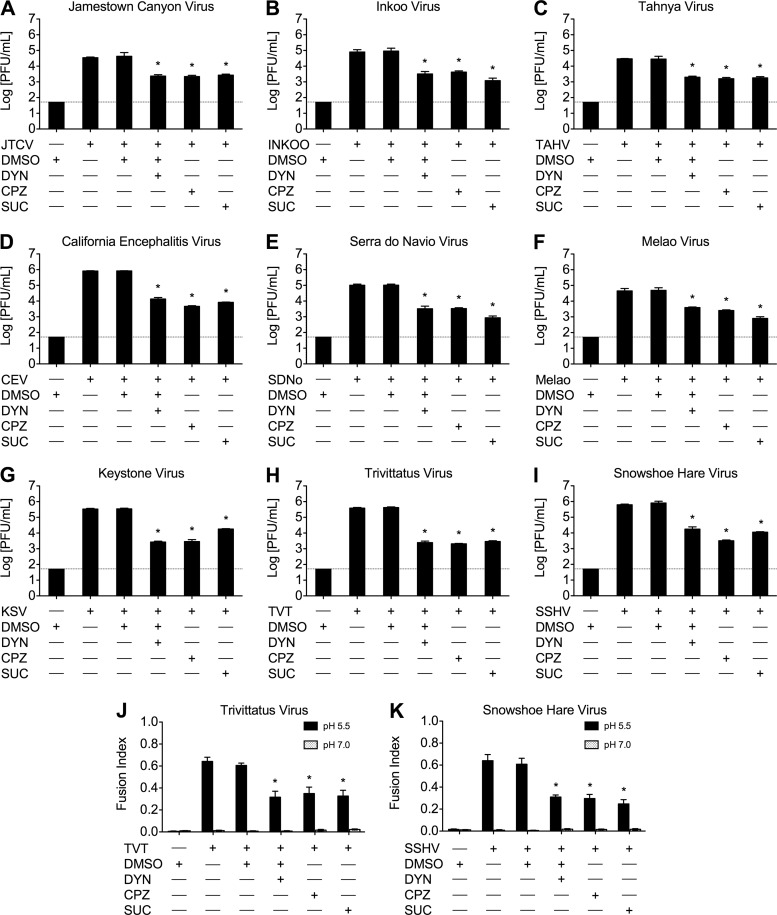Fig 3.
Orthobunyavirus growth and virus-mediated cell-to-cell fusion is reduced by chemical inhibitors of dynamin- and clathrin-mediated endocytosis. BHK-21 cells (untreated or pretreated with DMSO [0.4%, vol/vol], DYN [80 μM], CPZ [10 μg/ml], or sucrose [0.45 M]) were mock infected or infected with an orthobunyavirus (MOI, 0.01) in the presence of each treatment for 1 h, and supernatants were harvested 24 h postinfection. Orthobunyaviruses examined were Jamestown Canyon virus (JTCV) (A), Inkoo virus (B), Tahnya virus (TAHV) (C), California encephalitis virus (CEV) (D), Serra do Navio virus (SDNo) (E), Melao virus (F), Keystone virus (KSV) (G), Trivittatus virus (TVT) (H), and snowshoe hare virus (SSHV) (I). Viral titers were determined by standard plaque assays on Vero cells. The results are means ± SD from 3 independent experiments (*, P < 0.001 by Tukey test). The dashed line represents the limit of detection. (J and K) An FFWI assay was used to measure the extent of TVT (MOI, 0.5) (J) and SSHV (MOI, 5) (K) infection 18 h postinfection. Inhibitors of dynamin- and clathrin-mediated endocytosis significantly decreased FFWI in TVT- and SSHV-infected cells. As expected, cell-to-cell fusion was not observed in mock-infected control cells (data not shown). Error bars represent standard errors of the means from three independent experiments performed in duplicate (*, P < 0.01 by Student's t test).

